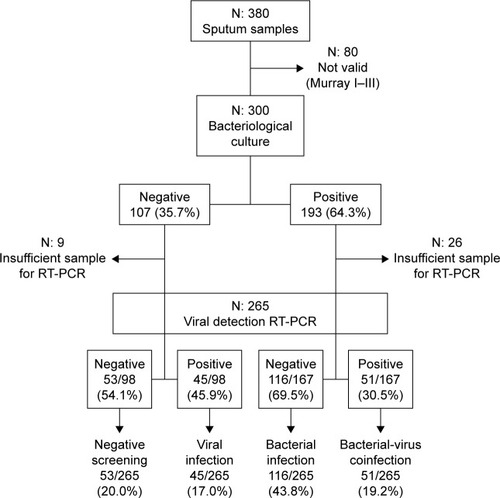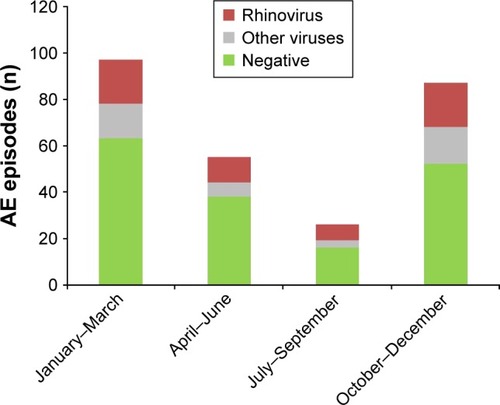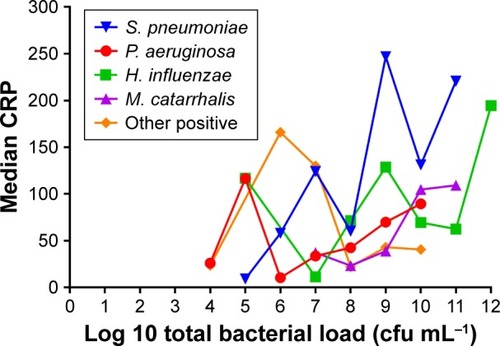Figures & data
Table 1 Baseline and clinical characteristics of 118 patients with severe COPD and acute infectious exacerbations
Figure 1 Flowchart for sputum samples included in the study.

Figure 2 Seasonal pattern of virus detection in episodes of acute exacerbation (AE) of COPD (265 episodes analyzed).

Table 2 Clinical characteristics and inflammatory biomarkers by microorganism (N=265)Table Footnote*
Figure 3 Relationship between bacterial load and CRP (Spearman’s correlation coefficient rho =0.92; P=0.006 in exacerbations due to S. pneumoniae).

Table 3 Markers of exacerbation severity (N=380)
Table 4 Analysis of factors associated with hospital admission. Results of univariate and multivariate GEE
